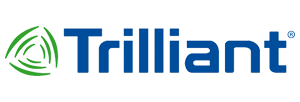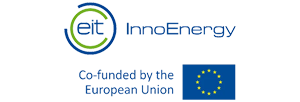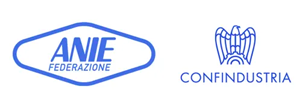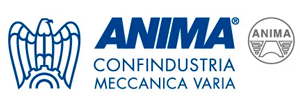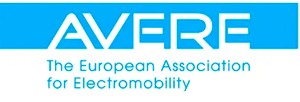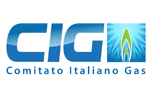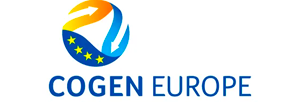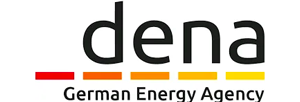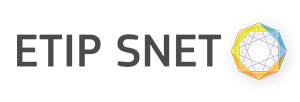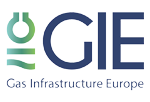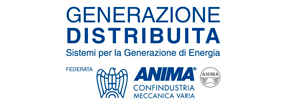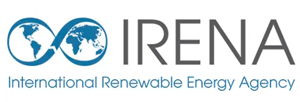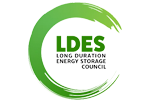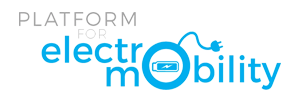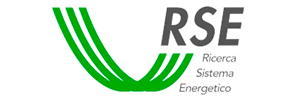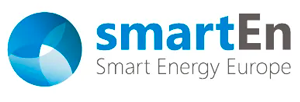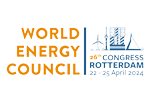Flexibility Markets Status Update: European Grid Operators Share Emerging Best Practices and Roadmaps for Grid Congestion and Virtual Power Plants
)
- Event: Enlit Europe 2024
- Date: 23rd October 2024
- By: Panel Discussion featuring Sebastian Copen, Maxim Suk, Marcia Polti, Jao Raphael, and Nikola Beck
- Estimated Read Time: 9–10 minutes
Introduction: Europe’s Flexibility Moment Has Arrived
As Europe races toward decarbonisation, one challenge looms large: how to create a flexible, cost-effective power system capable of supporting intermittent renewables and decentralised energy assets.
Moderated by energy analyst Felicia Jackson, the panel included Sebastian Copen (50Hertz, Elia Group), Maxim Suk (DNV), Marcia Polti (Octopus Energy), Jao Raphael (E-REDES), and Nikola Beck (UDSO Entity/Kas). The discussion aimed to examine the practical implementation of flexibility markets across Europe, learn from leading countries, and explore the critical policy, digital and behavioural changes needed in the years ahead.
As Copen succinctly put it: “Any flexibility is better than no flexibility”—a statement that resonated throughout the 70-minute discussion.
Setting the Stage: The Role of Flexibility in a Grid Under Strain
The session kicked off with a data-rich presentation from BloombergNEF (BNEF), highlighting the urgent global need to build or optimise electricity grids amid rising electrification and renewable energy integration.
Globally, grid investments are chasing an ever-growing list of demands—electrified transport, residential solar, hydrogen generation—all while supply chains struggle and queue sizes for renewable connection requests balloon. In the UK, the renewable project queue is now significantly larger than what’s expected to enter operation.
Nor is it just new generation—existing assets are being curtailed. In Germany, over 20% of offshore wind production was curtailed in 2023 due to transmission constraints. In short, the consequences of rigidity—wasted clean energy and delayed climate goals—are becoming clear.
BNEF’s models show that demand-side flexibility—especially from assets like EV charging—will play an increasingly vital role by 2040, eclipsing supply-side flexibility. The question that follows: how can Europe design effective, scalable flexibility markets to unlock this demand-side potential?
From Transition to Transformation: Europe’s Flexibility Frontiers
Across the continent, grid congestion is becoming a critical bottleneck. As Sebastian Copen (Elia Group) noted, Belgium alone is planning to invest €6.4 billion over the next four years in grid infrastructure. But “no transition without transmission” doesn’t mean hardware alone will solve the problem.
Copen emphasised the rising relevance of decentralised consumer assets like EVs, batteries and rooftop solar. Residential and small-scale commercial customers now possess real value—but unlocking it will require communication layers, trusted data sharing, and near-universal access to dynamic tariffs and smart meters. “Consumers can't participate without visibility and a business case,” he warned.
Meanwhile in the Netherlands, which faces extreme grid congestion, Maxim Suk (DNV) detailed the use of GOPACS, a real-time flexibility platform aimed at contract-less, transaction-based grid load management. Yet despite the technological promise, it hasn’t sufficiently eased congestion.
Why? In Suk’s words, “It doesn’t offer long-term investment signals,” contrasting it with more structured UK-style flexibility markets where “pre-contracted” local and system-level services are delivered via virtual power plants (VPPs).
A United Kingdom Model: Local, Market-Based and Granular
Marcia Polti from Octopus Energy offered the clearest glimpse of what a successful flexibility market looks like today. In the UK, Octopus manages over 1.3 GW of controllable consumer-side flexibility, scheduling EV charging through its Intelligent Octopus platform. Customers’ charging patterns are adjusted based on a combination of wholesale prices, capacity market signals, and local distribution operator needs.
What’s unique in the UK is the granularity: flexibility is managed and traded down to the substation level, allowing operators to reduce congestion with precision. The infrastructure supports “turn down” and even “turn up” events—for instance, paying customers to increase consumption to avoid renewable curtailments midday.
These services are orchestrated using a virtual power plant model that aggregates distributed energy resources, making them visible and accessible for grid management. This model continues to gain traction across European flexibility markets as key enablers of decentralised coordination and resilience.
In contrast, Germany’s approach remains more centralised, with system operators like Transnet BW trialling flexibility pilots focused on high-voltage constraints, rather than local management. “We still need a few overlays,” Polti noted diplomatically, hinting at the need for more proactive DSO (Distribution System Operator) engagement.
The Portuguese Pilot: Learning by Doing
Jao Raphael shared a compelling example of innovation from Portugal’s E-REDES, which recently launched its first local flexibility market. The pilot used market-based contracts for demand-side reduction during maintenance outages, allowing grid operations to continue seamlessly even with one transformer offline.
The process highlights a critical shift from inflexible “build first” mentality to a dual approach where flexibility is used to defer or complement investments—especially important as 30% of Portugal’s grid infrastructure is expected to surpass 40 years of service in the coming years.
Raphael made it clear that while dynamic pricing is on the horizon, Portugal has prioritised explicit markets where all asset types—storage, EVs, and responsive loads—can bid transparently. “We treat everyone the same,” he explained, stressing technology neutrality.
Challenges and Critiques: Where Are the Gaps?
Nikola Beck of the UDSO Entity brought a practical, grid-grounded view. From his perspective, flexibility is both an opportunity and a threat. While flexibility can help manage midday or evening peaks, it can also strain infrastructure if consumers simultaneously react to dynamic price signals in poorly coordinated ways.
To avoid exacerbating grid congestion, Beck called for foundational transparency and coordination between DSO and TSO (Transmission System Operators). Data standardisation, shared visibility into distributed assets (like behind-the-meter batteries), and network codes that clearly delegate control must be urgently addressed.
“Without harmonised frameworks,” Beck cautioned, “TSOs and DSOs will end up competing for assets—and the grid will pay the price.”
The Harmonisation Debate: One Market or 27?
A recurring theme was the call to harmonise product definitions, data standards, and technical requirements across EU member states. Marcia Polti argued passionately that “an electron in Germany behaves the same as an electron in France”—yet the barriers to cross-border flexibility participation remain immense.
She warned against divergent national implementations of the upcoming Network Code for Demand Response. “We’re heading for 27 different markets with 27 different standards. We need single product definitions if we want to scale up rapidly and allow flexibility service providers like Octopus to operate across borders.”
Maxim Suk agreed, citing the UK as proof that harmonisation works. Despite six DSOs, UK markets work under aligned frameworks—simplifying participation in flexibility markets and reducing costs. However, achieving this across Europe is more complex.
Nikola Beck called for realism. “It’s not like copying the UK. We have 27 countries, dozens more NRAs [national regulatory authorities], different consumer profiles and legacy infrastructure.” Nonetheless, he agreed that deepening understanding, sharing knowledge, and gradually aligning standards are all critical.
From Incentives to Investments: Designing Flexibility That Pays
Panelists agreed unanimously on one point: without a compelling business case, actors won’t play. Whether it’s household EV owners, industrial demand response operators, or battery developers, flexibility only emerges when value is visible and reliably priced.
Capacity payments—like those seen in the UK—offer predictable revenues and foster investment. Standardisation reduces transaction costs. And forward visibility from system operators gives service providers the confidence to build.
For renewable generators, integrating flexibility is increasingly becoming a prerequisite. Suk described how newer offshore wind tenders in the Netherlands now require bidders to demonstrate how they’ll support grid integration—often via co-located storage, PPAs with electrolyzers, or direct industrial offtake, often forming the basis of future virtual power plant integrations.
Still, Marcia Polti warned against mandated co-location. “Let’s not kill the market. Allow flexibility to emerge where it’s most cost-effective, guided by clear, locational price signals,” she said.
Looking Ahead: Priorities for the Next 1–2 Years
In closing, the panel shared their individual ambitions for flexibility markets over the next one to two years:
Sebastian Copen (Elia Group): Urged the creation of clear, visible price signals and accessible communications channels for residential flexibility. “Let’s move from awareness to business case.”
Maxim Suk (DNV): Highlighted the importance of the forthcoming ENTSO and EDSO methodologies for quantifying national flexibility needs. “Until we know how many gigawatts we need, we’re flying blind.”
Marcia Polti (Octopus Energy): Asserted her goal to activate Octopus’ VPP solutions across all its European markets. “We’re ready—but systems need to welcome us.”
Jao Raphael (E-REDES): Emphasised the need to move beyond industrial participants and empower aggregators and new entrants with simpler, harmonised rules.
Nikola Beck (UDSO Entity): Called for consensus on the Network Code and deeper sharing of practical DSO lessons: “Flexibility is an opportunity. But we need to handle it right.”
Conclusion: A Continent Poised for Change
Flexibility is no longer a technical luxury—it’s a foundational necessity for a secure, clean and affordable power future. Europe finds itself standing at an inflection point, where the structures built in the next two years will determine whether flexibility becomes the continent’s superpower—or a missed opportunity.
With demand rising, grids aging, and supply chains tightening, the chorus from the industry is resounding: From better data sharing to harmonised rules and smarter incentives, the ingredients for success are on the table.
Whether through dynamic tariffs, intelligent virtual power plant systems, or local market tenders, European nations are feeling their way toward flexibility. And, if the spirit of collaboration evident at Enlit Europe 2024 holds, that “energy of the future” may just arrive on time.
Stay tuned for further coverage from Enlit Europe and across the continent, as flexibility markets evolve from pilots to pillars of the European energy system.
Other Past Sessions
-
Event: Enlit Europe 2024 Date: 23rd October 2024 By: Kevin O’Donovan, Emily Stifel, Ross Marcinko, and Giovanni Bodega Estimated Read Time: 5–8 minutes Introduction: Redefining the Future of P ...
-
Event: Enlit Europe 2024 Date: 23rd October 2024 By: Panel Discussion featuring Sebastian Copen, Maxim Suk, Marcia Polti, Jao Raphael, and Nikola Beck Estimated Read Time: 9–10 minutes Introdu ...
-
Event: Enlit Europe 2024 Date: 23rd October 2024 By: Panel Discussion featuring Sebastian Copen, Maxim Suk, Marcia Polti, Jao Raphael, and Nikola Beck Estimated Read Time: 9–10 minutes Introdu ...
-
Event: Enlit Europe Date: 24th October 2024 By: Discussion Panel (Moderated by Ralph) Estimated Read Time: 7–8 minutes Introduction: Rethinking Dispatchable Power as the Backbone of Net-Zero A ...
-
Event: Enlit Europe 2024 Date: 24th October 2024 By: Kate Willard Estimated Read Time: 15–20 minutes Introduction: Reimagining Industry for a Net-Zero Future Are we decarbonising fast enough—a ...
-
Event: Enlit Europe 2024 Date: 23rd October 2024 By: Gaia Gallotti (IDC) – Panel Moderator Estimated Read Time: 7–8 minutes Introduction: Charting the Course for the Utility of the Future The ...
-
Event: Enlit Europe 2024 Date: 23 October 2024 By: Toma Bert (Managing Director, ESMIG) Estimated Read Time: 25'30 minutes Introduction: Smart Metering at the Heart of Europe's Energy Revolution ...
-
Event: Enlit Europe Date: 24th October 2024 By: Kim Chen, Moderator and CEO of Innovation Force Estimated Read Time: 10–12 minutes Quick Summary Cleantech startups are driving the next wave of ...
-
Event: Enlit Europe Date: 24th October 2024 By: Beat Petrovic, Senior Analyst at Ember Estimated Read Time: 10–12 minutes Quick Summary Energy flexibility, smart grid solutions, and grid congest ...
-
Event: Enlit Europe Date: 24th October 2024 By: George Biscardini Estimated Read Time: 10-12 minutes Quick Summary Hydrogen energy in Europe, coordinated energy systems, and integrated energy in ...


)
)
)
)
)
)
)
)
)
)






